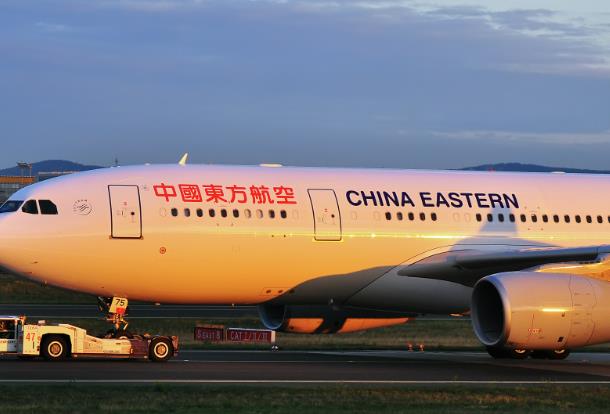ChinaTravelNews, Ritesh Gupta - Full service airlines, featuring the likes of Lufthansa Group, Emirates and British Airways, have led the adoption of IATA’s New Distribution Capability (NDC) XML standard in the past few years, and in doing so, have also managed to challenge the distribution status quo via initiatives such as levying a surcharge for every ticket issued by a booking channel using GDS and the same not being applicable to airline.com, NDC-connected channels.
As for China, there is no introduction of a surcharge or NDC commission for travel agents yet.
Disturbing status quo not easy
There have been certain direct connectivity deals featuring Emirates, Lufthansa etc. but disturbing traditional mode of distribution hasn’t been easy in China.
For instance, in case of Ctrip.com, a foreign carrier has worked out different arrangements for point of commencement of travel from within China and outside. This is essentially considering the power of GDSs in respective markets.
“TravelSky is a critical player in the entire chain and their role, their influence can’t be ignored (when it comes to how transaction eventually shapes up in the e-commerce environment featuring Chinese travellers),” said a senior executive associated with a foreign carrier. The same source went on to admit that as of now “there would hardly [be any] OTAs or travel agencies which would go into a project of direct connect in China, for the point of commencement in China”.
So let’s say, an OTA is selling outside of China, could be Hong Kong or Singapore or in Europe, say Amsterdam to London flight. So an OTA would be interested in a direct connect for any journey starting outside China, as the deal would bypass a foreign GDS. So considering the way certain European carriers have gone with charging a surcharge for any non-NDC booking coming from a GDS, there would be an expense that an OTA would have to incur, due to new commercial strategies being signed by European carriers with GDSs over the last couple of years, this meant OTAs would be interested in a direct connect.

“Also, for bookings from Europe into China, there could be a direct connect. It is a possibility. But for any travel that initiates from China, then such arrangement is unlikely at this juncture. Of course, they (OTAs) are interested as they save on the DCC or Distribution Cost Charge. So, for a trip such as Shanghai-Zurich bought via a Chinese OTA is likely to feature TravelSky in the transaction. Technically it is possible to do it (to bypass the GDS), but TravelSky in a monopolistic position so the game stays the way it is in China,” said the source, who added that there is information about TravelSky’s plan or the new product which is not clear in terms of how it would facilitate NDC-oriented direct connectivity at this juncture.
“The markets that are heavily regulated, carriers are finding it tough to implement the DCC. Monopoly isn’t to going to let this happen – be it for $2 commission to agents (to be paid by airlines to agents for booking via NDC connection) or the surcharge. Yes, the differentiation by airlines rather than staying with generalisation of costs (DCC is finalised as per the additional costs incurred by an airline via GDS bookings when compared with bookings made directly with the airline). Understandably progress has been slow in China,” said the source.
TravelSky calls for orderly implementation schedule for NDC
GDSs emphasise that direct connect is not a novelty, it has existed for many years. They stated that “complexity and associated high costs” posed major hurdles. Even agencies felt that it is prudent to implement few supplier direct connections but not when they had to deal with loads of airlines and other suppliers. But now with standardisation, and certain airlines being keen on constructing the offer themselves via consolidation of fare data, availability data and schedule data, GDSs have also been looking into NDC XML connectivity. Groups like IAG point out that with NDC, they would in a position to distribute previously unavailable products and services to the GDS. This will include the ability to add flight ancillaries to bookings made in the GDS. And accordingly airlines are willing to offer a direct link into GDS’ host reservation system for flight search, booking and ticketing.
For their part, the team at TravelSky has been working on the XML-based data transmission standard and even working on their Carrier Direct Platform (CDP), enabling airlines to connect directly with travel agents, corporate buyers, OTAs etc. But regular updates in the versions of the NDC schema have proven to be an issue for the company. Deploying an NDC API between airline and intermediaries hasn’t proved to be one standard process, the evolving versions of the schema have impacted the specific XML messaging and with messages themselves changing over time – new ones added, existing ones modified, etc. – understandably different stakeholders haven’t been pleased. Delving further into the main issue, TravelSky had indicated that organizations that went ahead with early versions of the schema are struggling, adding that the “cost of migration for early adopters can be more than expected”.
Even though TravelSky has been working on a couple of projects around their CDP (with Air China for air ancillary offerings such as letting one to opt for seats and prepaid baggage; and with Shandong Airlines even a bigger set of ancillary products - seat selection, prepaid baggage, air insurance and chauffer services), progress has rather been slow. TravelSky, like many other stakeholders from different markets, has asserted that there needs to be uniformity in terms of understanding of the standard. Rather there has been a varying level of interpretation of the schemas, and this meant that the integration had to be worked out for specific projects and the standard sort of lacked standardisation.
On the positive side, OpenJaw, which was acquired by TravelSky Technology last year, achieved Level 3 NDC capability certification in 2017. The Dublin-based company has been working with airlines in this region to step up their retailing and distribution capabilities. For instance, it started working with Cathay Pacific this year, focusing on NDC. The plan is to offer agents and other third-party sales outlets detailed, image-led product content, promotions and advanced service information. Cathay believes this is an apt way of showcasing their premium ground and inflight products.
“We have collaborating with TravelSky, though specifics can’t be shared at this juncture,” said a source from the Irish company, refusing to divulge details about how commercial aspects or specific modules of a PSS or how distribution capabilities are being refined.
As for OTAs in China, they are open to connecting via any API depending upon the readiness of domestic airlines. “OTAs in China aren’t differentiating local and foreign airlines from an API connectivity point of view. The airline flagship store on OTAs are an apt example of the API strategy in China, it has been around for years and is accounting for over 50% direct sales of majority Chinese airlines today. There is no standard language, OTAs are connecting to airlines systems via proprietary APIs.”
IATA acknowledges that the problem today is that the airlines that already have API XML connectivity have it in a proprietary way. The consequence is that implementations with new partners take time and are costly as they are all unique. “Proprietary XML connectivity is widely used between airlines, intermediaries and OTAs before NDC standardization, so we are hopeful that they are ready for that and can easily shift to NDC standardized connectivity,” Ronnie Wang, Regional Manager in North Asia of IATA, told ChinaTravelNews.com in an interview this year. Wang underlined that main challenges in this market are IT infrastructure, mind-set change to air retailing and budget limitation and external factors such as government policy and regulation. He believes that the industry is moving in the right direction, thus with phased roll-out, overall enhancement in infrastructure, development of more contents and integration of more ancillaries, especially with the ONE Order standard coming on the way, NDC adoptions will be boosted and leveraged better gradually.




